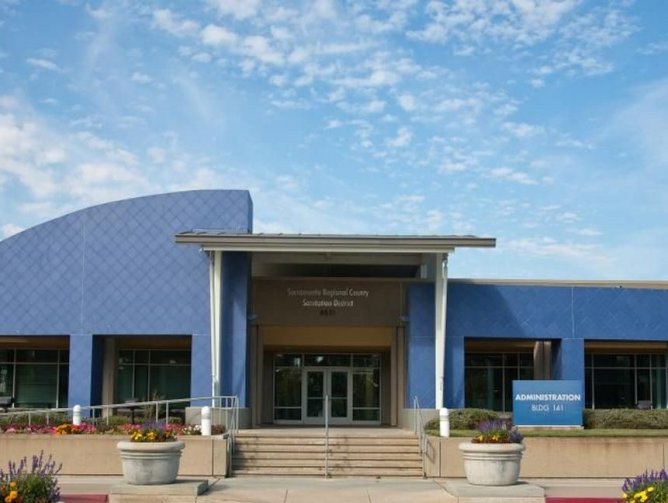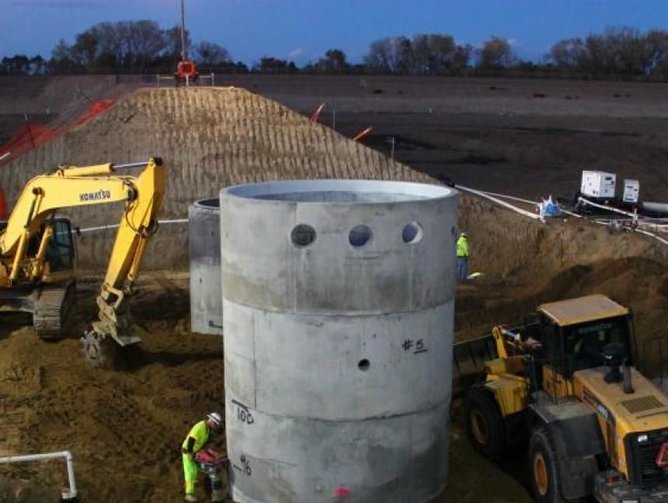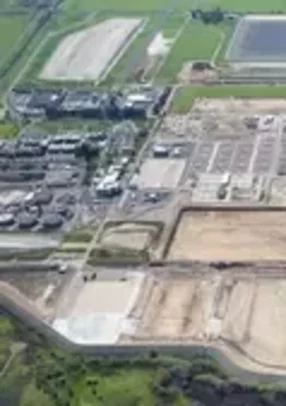At the end of 2010, the state of California issued a new set of rigorous water quality guidelines, along with its latest permit for Regional San. Created out of concern for the ongoing health and safety of the Sacramento River where wastewater is safely discharged, as well as a broader concern for water usage in California, this mandate includes heightened regulations regarding ammonia and nitrate removal and stricter guidelines for pathogen reduction.
To meet the requirements within the mandate, Sacramento’s wastewater treatment plant needs to improve its ammonia and nitrate removal rate by 2021 and enhance pathogen removal by 2023. Because its current wastewater treatment facility, which went online in 1982, does not meet these news treatment requirements, Regional San aims to meet the new mandates with the EchoWater Project, one of the largest public works projects in Sacramento history. With this project, Regional San is on its way to increasing opportunities for recycled water usage and achieving a higher standard of water quality in the Sacramento River watershed.
From pilot to full-scale innovation
“We’re calling this major upgrade the ‘EchoWater Project’ to reflect how it will take our wastewater and return it to a clean, natural state—much like an ‘echo’ returning to its original source,” stated Regional San in its launch of the project. Regional San’s goal with the EchoWater Project is a full upgrade of functionality from an advanced secondary to a tertiary level of treatment. This will have several concrete effects, including a 95 percent ammonia reduction in water discharged to the Sacramento River.
Regional San’s EchoWater Project consists of about 15 individual initiatives working in concert to achieve this overarching goal. At the center of these projects is the construction of a massive biological nutrient removal (BNR) facility. A $600 million development the size of 20 football fields, the facility will be able to effectively remove practically all ammonia and nitrate from wastewater as it flows through the plant. Regional San perfected the capabilities of its new BNR facility by first building a 0.5 million gallon per day (MGD) “pilot” facility for hands-on research.
“The pilot facility was designed and built in 10 months,” said Vick Kyotani, Deputy Director of Operations and Program Manager for the EchoWater Project. “It was operated for a 12 month period to validate the BNR process, and test three filtration technologies and three disinfection technologies.”
After testing nine different treatment train options in total, Regional San used its data along with business case evaluations and life cycle cost analyses to decide on the most cost effective technology to achieve its goals.
“The pilot plant allowed us to select the technologies to complete a facility plan that was needed to complete the environmental permitting process,” said Kyotani, explaining how Regional San will integrate its pilot program findings into the full scale facility. “Selecting the most cost effective solutions used for the basis of designs allowed us to progress the design faster—we did not need to select the technology as part of the design process. This reduced the design time required, and a second phase of testing on the selected technologies has allowed us to get approval of higher filter loading rates and more optimized disinfection parameters which will significantly reduce project costs.”
An array of upgrades
Beyond the main BNR facility, the additional initiatives will support and enhance water quality through such features as:
- Tertiary treatment facilities with functionalities including granular media filters, pump station and chlorine contact basins;
- A massive flow equalization project, which will provide increased storage to existing basins to reduce peak flow volumes to the BNR facility;
- Nitrifying sidestream treatment to reduce ammonia loads before they reach the main BNR facility, reducing strain and chemical costs on the main plant;
- New and improved disinfection chemical storage facilities, which will replace the current existing gas-based disinfection system with a safer liquid system, and;
- An all-new return activated sludge pumping system, which will provide upgraded replacements for the 48 existing pumps, VFDs and electrical power and control panels currently in use at secondary sedimentation tanks.
Regional San is also taking an innovative approach to design throughout the EchoWater Project, improving efficiencies and accuracy through design tools and methods like 3D design models to reduce the occurrence of design errors, reliability centered design (RCD) and maintenance (RCM), and 5D modeling with Synchro technology to watch construction in time lapse and identify potential timing conflicts before they occur.
“The goals of these efforts are to provide the most efficient and reliable systems possible, not only in terms of initial capital cost, but more importantly for the long term life of the assets,” said Kyotani.
Benefitting Sacramento’s environment and the community
When completed, the EchoWater Project will bring multiple benefits to Sacramento and its residents, not least of which is a higher standard of water quality for the Sacramento River, which will in turn provide better protection and longevity for the delicate Sacramento River Delta ecosystem.
“The entire treated flow from the upgraded plant will meet Title 22 recycled water quality,” said Kyotani, noting that Regional San is actively working on projects to increase the usage of recycled water in and around the city and county of Sacramento.
“We currently supply about three MGD of recycled water for irrigation to communities in the Elk Grove area south of the treatment plant, and will be supplying about one MGD for cooling tower use to a cogeneration facility in the City of Sacramento,” he said. “We are also in the planning stages of a large recycled water project for agriculture in south Sacramento County.”
Regional San is also exploring further environmental improvements with this project. One project already in progress is a solar array, which will generate power that will in turn be fed back to the wastewater treatment plant to mitigate additional electricity usage from the EchoWater Project. Not only will this potentially create savings for ratepayers, but the use of renewable energy will create a treatment plant that is more environmentally sound.








